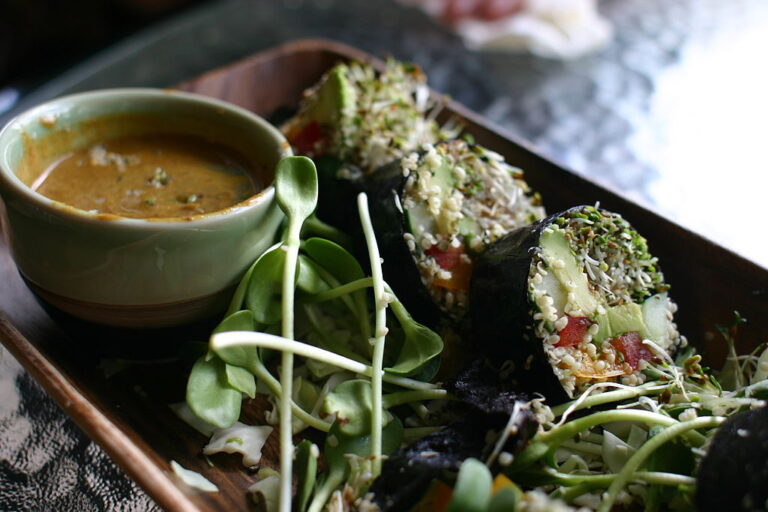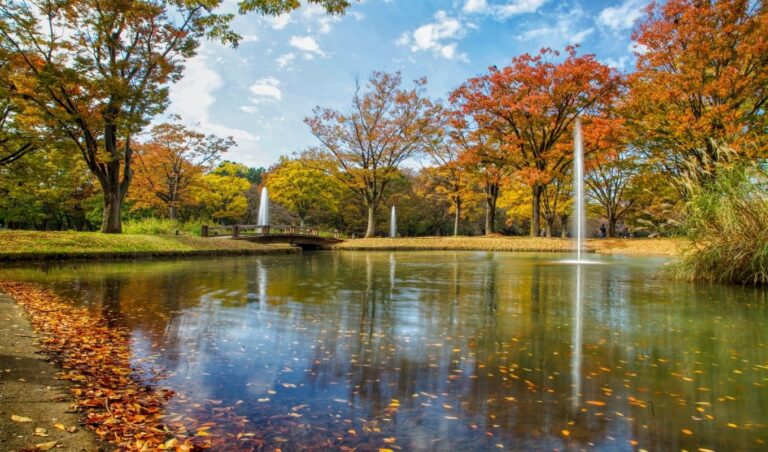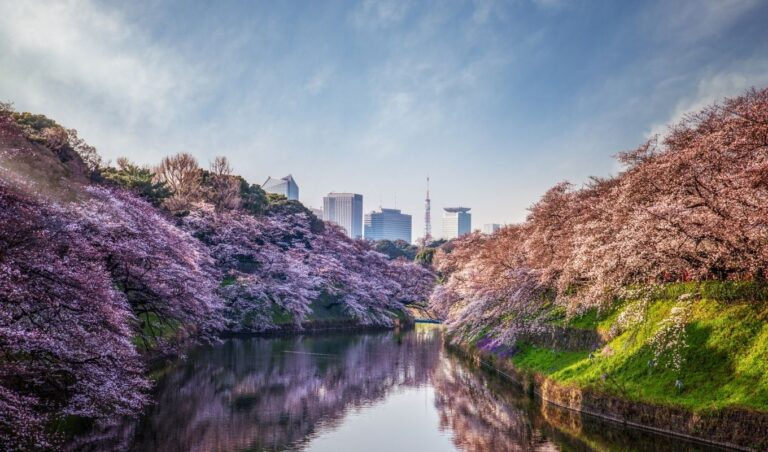Tokyo, a bustling city with over 13 million people and spanning across a large area of about 2,194 square kilometers, offers many things to do and places to discover. However, understanding this complex destination can be challenging.
Tokyo is divided into different parts such as the central wards within the city itself, Tokyo Metropolis, and The Greater Tokyo Area which includes neighboring prefectures like Saitama, Chiba,Kanagawa,Ibaraki,tochigi,Gunma,and Yamanashi. When people talk about “Tokyo,” they usually mean discussing specific areas within this vibrant Japanese capital city’s boundaries.

Tokyo’s Special Wards: Unveiling Hidden Gems
Discover the hidden treasures of Tokyo’s special wards with our neighborhood guide. We’ll show you the best places to visit and explore in this vibrant city, from iconic spots to secret gems. Join us on a virtual journey as we unveil the must-dos for your unforgettable exploration in Japan’s sprawling capital.
Tokyo’s Unique Wards and Districts
Tokyo is made up of 23 different areas called wards, each with its own special characteristics. These wards are like individual cities within the larger city of Tokyo. They are further divided into districts such as Harajuku and Asakusa.
Each ward has its own amazing attractions to see, but trying to explore all 23 during a short visit might not be possible or enjoyable. So let’s focus on some highly recommended wards and districts in Tokyo that you should visit.
Shibuya: Tokyo’s Famous District
Shibuya, a well-known area in Tokyo, is famous for its busy crossing where 2.500 people cross the roads at once during peak times. Located in the heart of Japan’s capital city, Shibuya is full of restaurants, bars, and cafes that cater to different tastes.
It has both international brands and local designers’ stores which attract shoppers. The district is popular among young people who enjoy trying new foods and socializing because it offers a wide range of entertainment options nearby.
Some notable attractions in this lively district are the Shibuya Scramble Crossing with flashy lights, Meiji Shrine, and Harajuku which all draw visitors from around the world
Akihabara: Tokyo’s Geek Town
Akihabara, also known as 秋葉原 in Taito City, is a famous district often called Electronic Town or geek town. It is highly regarded for being a true haven for fans of manga and anime. Inside Akihabara, you’ll find many shops dedicated to selling various electronics, games, anime merchandise, and arcades where you can play video games.
If you’re looking for a place that will immerse your senses and embrace all the stereotypes associated with this world, Akihabara is without a doubt the perfect choice.
Exploring Shinjuku: Busy Station, Lively Bars, and Panoramic Views
Did you know that Shinjuku station is the busiest train station in the world? It has over 260 exits and around 1.26 billion people use it every year. With so many ways to get lost in this massive hub, it’s easy to see why.
Another interesting place in Shinjuku where getting turned around is practically guaranteed is Golden Gai—a maze-like network of narrow streets lined with small bars full of unique charm. Don’t miss out on experiencing both Golden Gai and Omoide Yokocho (Piss Alley), popular spots for locals looking for a drink.
And when daylight comes calling, make sure to visit Shinjuku Gyoen—one of Tokyo’s largest parks—and take advantage of the free panoramic view from the famous Tokyo Government Building on its impressive 44th floor.
Ueno Park: A Historic and Beautiful Destination
Ueno Park, also known as 上野公園 in Ueno district of Taito City, is a famous place where people go for fun on the weekends. It’s one of Japan’s oldest public parks. Before it became a park, there were fancy temples called Kaneiji Temples that got destroyed during a big fight in 1868.
Now there are lots of museums with cool art stuff and pretty shrines and temples to see too. The best part is the Tokyo Zoo – it’s really popular. But the absolute greatest time to visit Ueno Park is April when all the Sakura trees bloom pink flowers that take your breath away.
Odaiba: Tokyo’s Technological Marvel
Odaiba, also known as お台場 in Japanese, is a man-made island located in the beautiful Tokyo Bay. It was created during the Edo era to protect Tokyo from potential attacks by sea. However, Odaiba has now transformed into a hub of cutting-edge technology and exciting entertainment.
You can dive into an incredible world of sensory delight at TeamLab’s innovative attractions or indulge in some retail therapy at expansive shopping centers. Take whimsical rides on Ferris wheels that give you breathtaking views of the cityscape. For those seeking relaxation, there are serene beaches where you can soak up the sun and unwind.
As night falls, marvel at Rainbow Bridge illuminating with its enchanting glow against Tokyo’s majestic skyline—truly an unforgettable sight.
Ginza: Tokyo’s Shopping Hub
Ginza is a famous shopping area in Tokyo, also known as 銀座. It has always been an important part of the city and holds a lot of history. People from all over the world come here to shop for expensive designer brands and unique local stores.
If you love architecture and art, Ginza is perfect for you. The buildings have beautifully designed fronts that catch everyone’s attention. You can also find many galleries featuring stunning artworks created by artists from different places.
While exploring Ginza, don’t forget to look up sometimes. There are amazing views of Tokyo’s skyline that anyone can enjoy without spending any money.
Ryogoku: The Sumo Wrestling Hub
Ryogoku, also known as 両国 in Japanese, is the lively center of sumo wrestling. Located in Sumida City, this district is like a vibrant village dedicated to the sport. Within its borders stands Ryogoku Stadium – a famous venue that hosts three out of six prestigious Grand Sumo Tournaments every year.
It’s not uncommon to come across a powerful wrestler walking these streets since many sumo stables are based here. One must-try culinary delight in this area is chanko; a hearty and high-calorie hot pot beloved by professional wrestlers on a daily basis. What makes it even more special is that many eateries serving this delicious dish are run by former rikishi (sumo wrestlers).
Nakano: A Unique District in Tokyo
Nakano, a neighborhood called 中野 in Japanese, remains untouched by Tokyo’s modernization efforts. Located west of Shinjuku, this residential area has something special to offer – Nakano Broadway. It is a delightful place for everyone and especially manga enthusiasts as it houses a wide variety of collectibles like trains and action figures that are easy to find.
In addition to Nakano Broadway, there are many nostalgic izakaya establishments and bars nearby where friendly locals create a relaxed atmosphere perfect for engaging conversations.
Ikebukuro: Tokyo’s Anime Hub
Ikebukuro, also known as 池袋 in Japanese, is a busy transportation center located in the heart of Toshima City.
It has one of Tokyo’s liveliest train stations and offers plenty of opportunities for shopping, eating out, and having fun. Ikebukuro is famous for its anime culture and attracts many otaku (geek) enthusiasts, although not as much as Akihabara does.
This district particularly caters to female visitors with its charming cosplay stores, dedicated anime shops, and delightful butler cafes. Within this bustling area stands Sunshine City – where you can find Tokyo’s very first observation deck on top of an impressive building structure.
Roppongi: A Vibrant Tokyo District with Nightlife, Art, and Luxury
Roppongi is a lively neighborhood in eastern central Tokyo. It’s famous for its exciting nightlife scene with lots of cozy bars and popular nightclubs that attract both locals from Tokyo and international visitors.
But Roppongi has more to offer than just parties. It also houses many art museums that showcase beautiful collections. And if you’re into fancy dining or luxury shopping, there are Michelin-starred restaurants and high-end boutiques too.
What makes Roppongi special are the different elevations it has. That’s why people call it ‘Roppongo Hills.’ In this area, you’ll find two remarkable landmarks: The Mori Art Museum and The Mori Tower – loved by countless admirers from all over the world.
Kichijoji: A Vibrant Tokyo Neighborhood
In Tokyo, there is a lively neighborhood called Kichijoji. It is located just 15 minutes northeast of Shinjuku and Shibuya when you take a train to Suginami City. What makes Kichijoji special are its big parks, busy shopping streets with lots of arcades, delicious dining options at restaurants and cafes, as well as charming shops filled with interesting little things. But what really stands out about Kichijoji is the famous Ghibli Museum it houses – a place that fans absolutely must visit. Don’t forget to check out their jazz scene and experience the friendly atmosphere in many standing bars found in this unique part of Tokyo. Overall, enjoy an unconventional adventure through these unforgettable city streets.
Discover Asakusa’s Charm
Asakusa, also known as 浅草, is a delightful neighborhood located in Taito City. It attracts many travelers who are captivated by its mix of traditional Japanese culture and modern attractions. The famous Sensoji temple is the centerpiece of Asakusa and should not be missed – it welcomes visitors day and night with its timeless splendor. Make sure to explore all that Asakusa has to offer.





